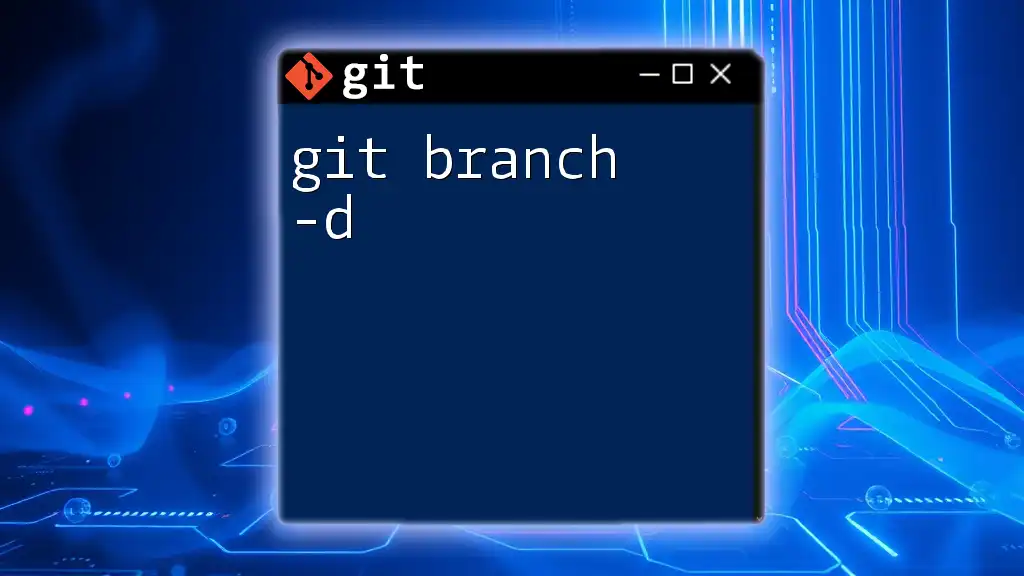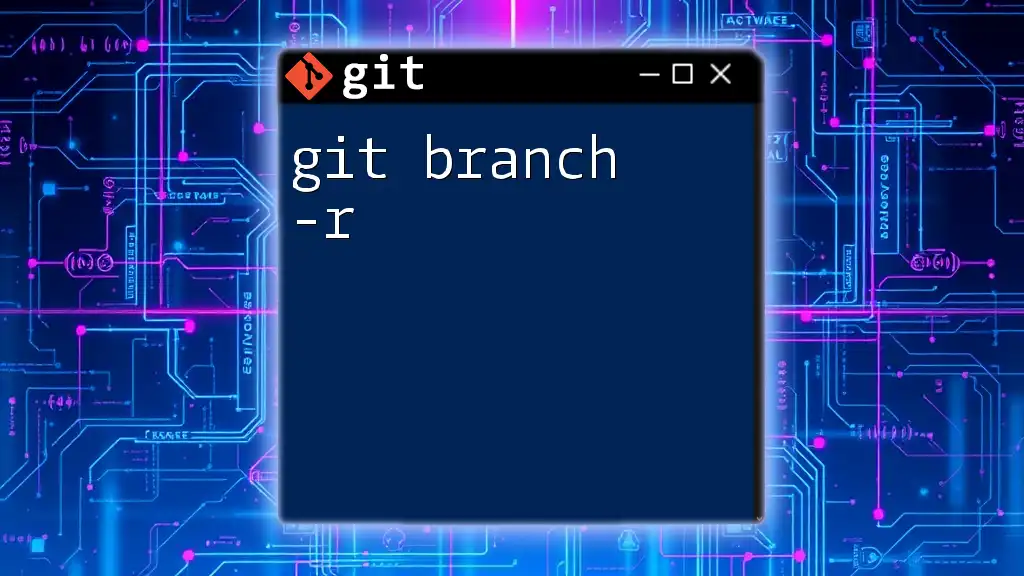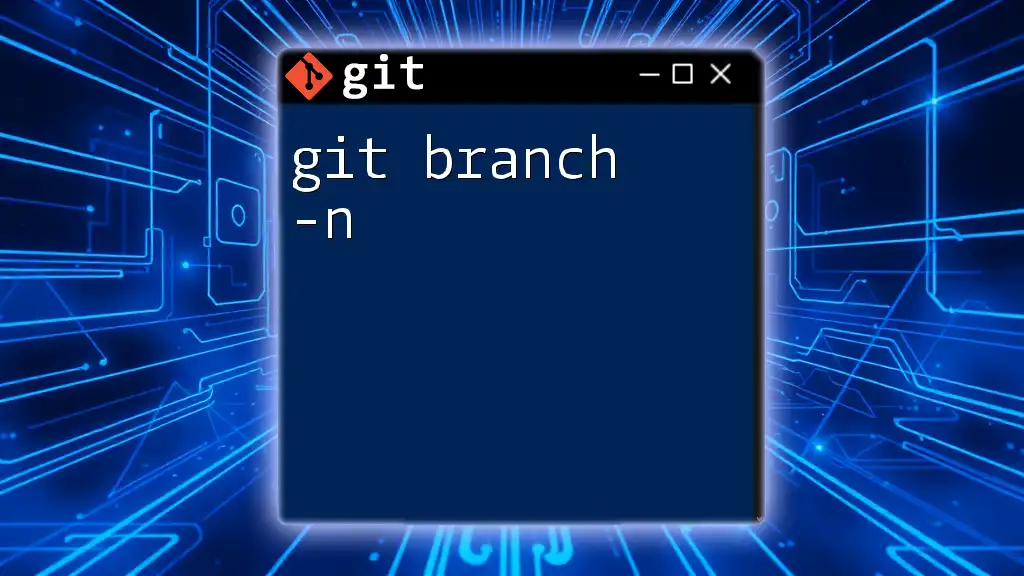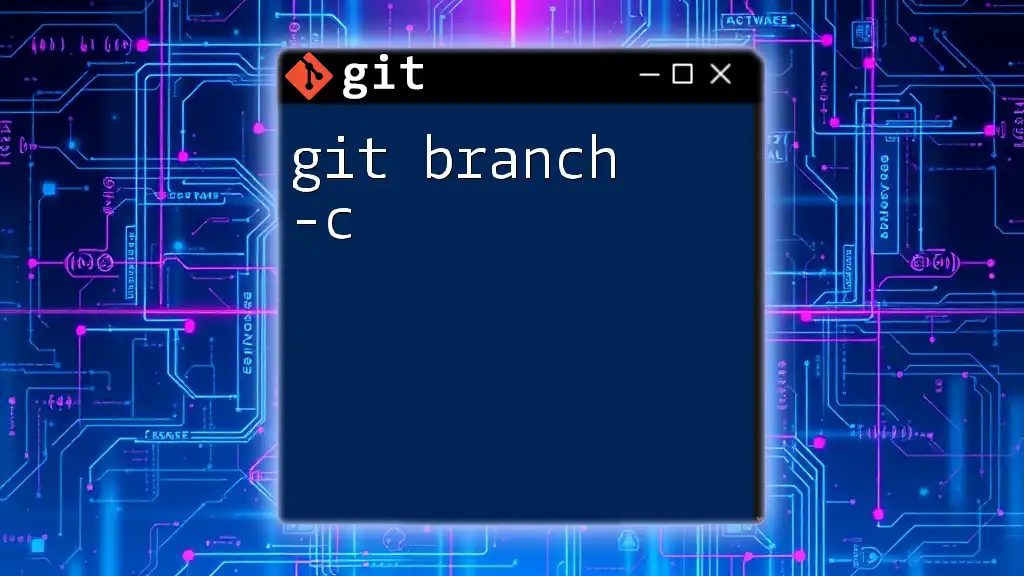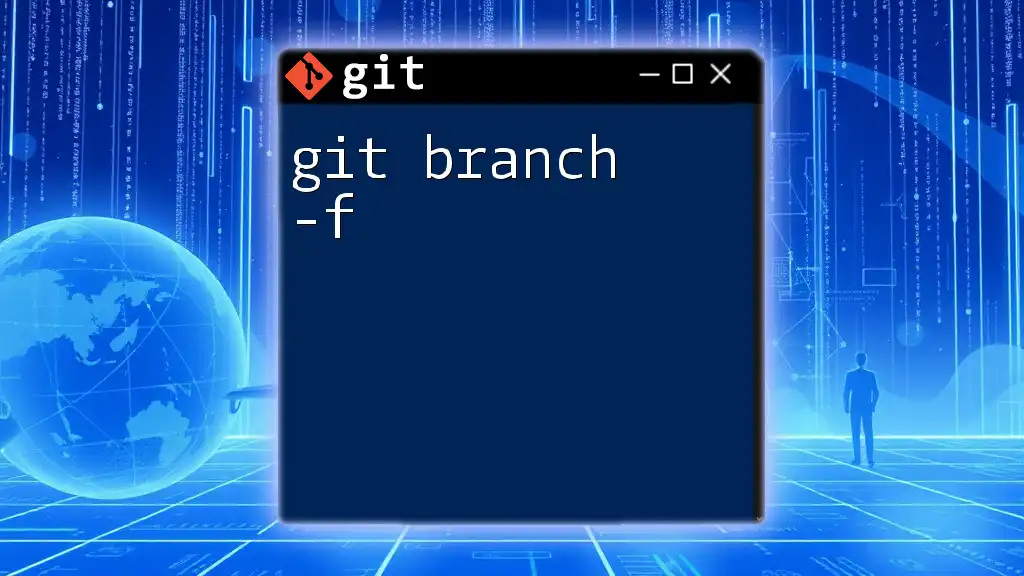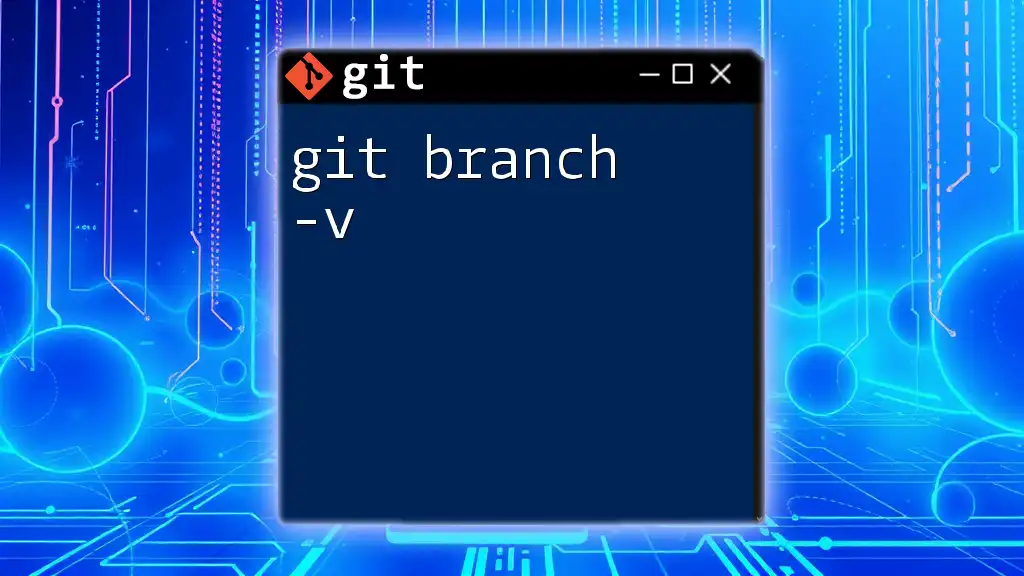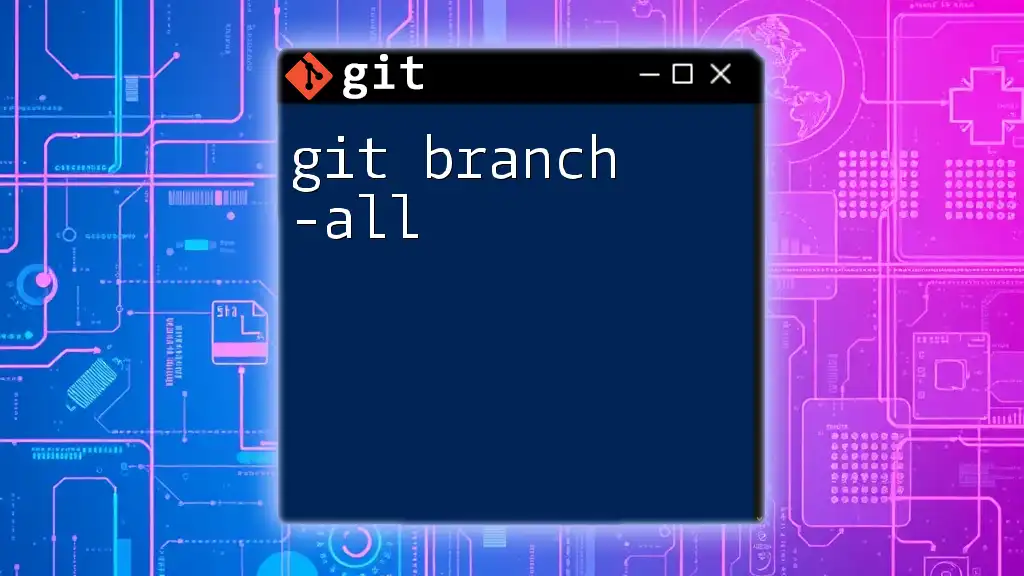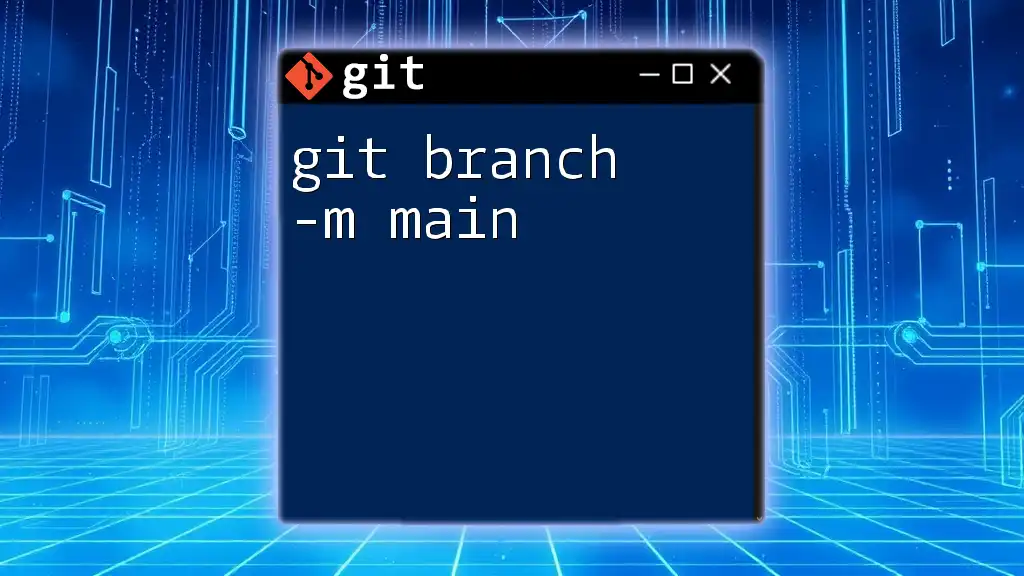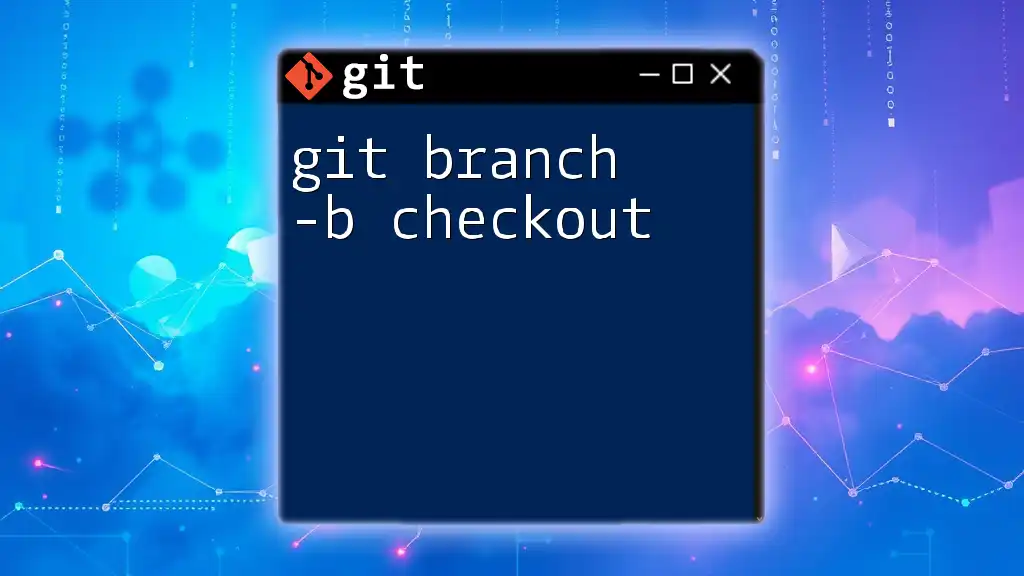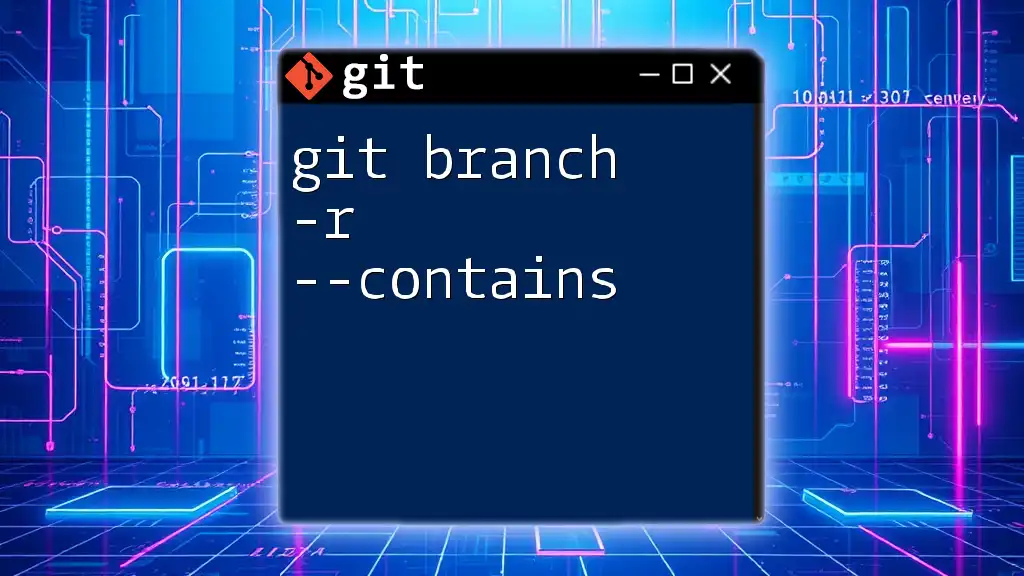The `git branch -d` command is used to delete a specified branch in your Git repository, ensuring it has been fully merged into your current branch to prevent any loss of work.
git branch -d branch_name
Understanding `git branch -d`
What Does `git branch -d` Do?
The command `git branch -d` is used to delete a specific branch in a Git repository. When executed, it checks if the branch you intend to delete is fully merged into the current branch. If it is, the deletion process will proceed without any issues. However, if the specified branch has not been merged, Git will throw an error, preventing accidental loss of changes.
It's important to distinguish between the `-d` and `-D` options. While `git branch -d` is a safe deletion command that checks for unmerged changes, `git branch -D` forcibly deletes the branch regardless of its merge status. This distinction is crucial to avoiding unintentional loss of important work.
How to Use `git branch -d`
Step-by-Step Guide to Deleting a Branch
-
Opening Your Terminal
Start by accessing your command line interface. This is where you will input your Git commands. -
Navigating to Your Repository
Use the `cd` command to move to your project’s directory. For example:cd path/to/your/repo
Basic Syntax of the Command
The basic syntax for deleting a branch is straightforward:
git branch -d <branch-name>
To find the names of branches in your repository, simply run:
git branch
This command will list all your branches, both local and remote.
Example of Deleting a Branch
Assuming you create a new branch to work on a feature, you can do the following:
- Create and switch to the new branch:
git checkout -b feature-branch
- Once you have completed your work and merged it back to the main branch, you can delete the feature branch:
git checkout main
git branch -d feature-branch
If the `feature-branch` has been merged successfully, you should see a message confirming the deletion.
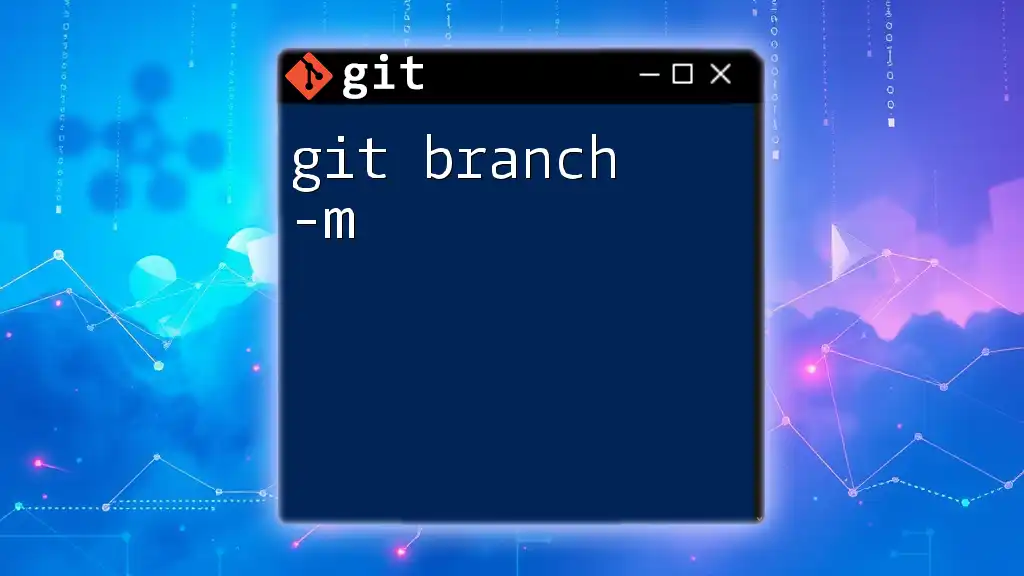
Handling Common Scenarios
Deleting a Merged Branch
When you delete a branch that is fully merged, the deletion process is clean and efficient. An effective workflow to follow involves merging changes back into your main branch before deletion. This ensures no important updates are left behind. After merging, use:
git branch -d merged-branch
You should see a confirmation message, indicating a successful deletion.
Trying to Delete an Unmerged Branch
If you attempt to delete a branch that hasn't been merged, you will receive a warning message:
error: The branch 'unmerged-branch' is not fully merged.
If you are sure you want to delete it, run 'git branch -D unmerged-branch'.
This serves as a protective measure, preventing unintentional loss of changes. In case you are certain you'd like to delete it, consider revisiting the branch or its commits before using `-D`.
Force Deleting a Branch with `-D`
Although using `git branch -D` includes the risk of losing unmerged work, there are scenarios where you might need it—perhaps the branch is abandoned or the work is not necessary anymore.
To forcefully delete the branch:
git branch -D unmerged-branch
Be cautious; this action cannot be undone, and any unmerged changes will be permanently lost.
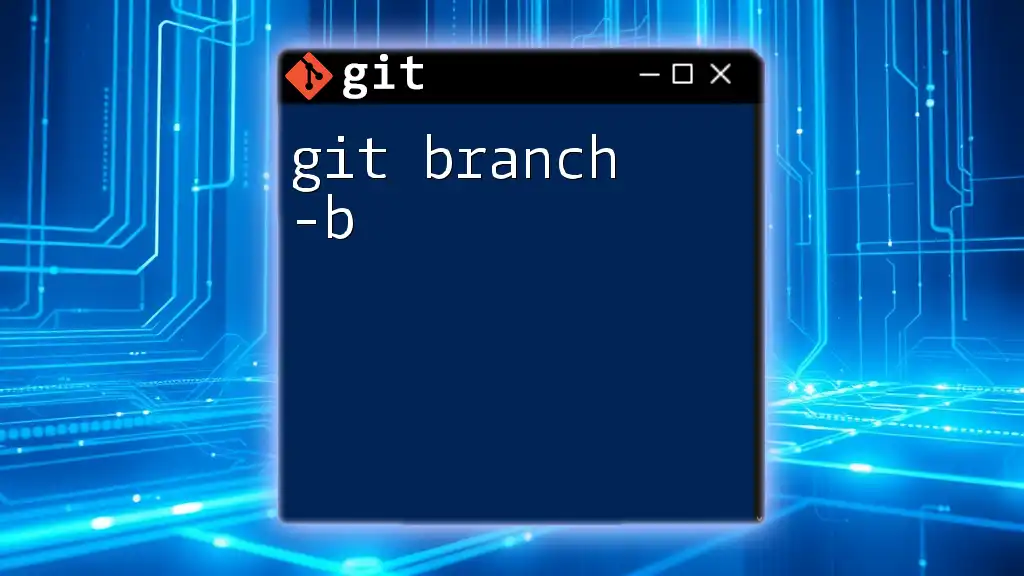
Best Practices for Branch Management
Regularly Clean Up Your Branches
Maintaining an organized repository is essential for smooth collaboration. Regularly assess your branches and delete those that are no longer necessary. This reduces clutter and improves overall visibility for team members.
Naming Conventions for Branches
Utilizing clear naming conventions makes it easier to identify the purpose and progress of branches. Common prefixes for branch names include:
- `feature/`: For new features
- `bugfix/`: For bug fixes
- `hotfix/`: For critical bug fixes that need immediate attention
Consistent naming helps organize your workflow and enhances teamwork.
Using Branch Protection Rules in Collaboration
When managing larger teams, implementing branch protection rules can aid in maintaining code quality. This may involve setting permissions that restrict who can delete or merge specific branches, ensuring all modifications are made thoughtfully.

Troubleshooting Common Issues
Error Messages Explained
When using `git branch -d`, you may encounter several common error messages. Understanding these can help you navigate issues efficiently:
- Branch Not Merged Error: Indicates that the branch has not been merged. Verify your branching strategy and consider merging first.
If you need solutions to these issues, always consult your team or seek Git documentation for best practices.
Recovering Deleted Branches
In some cases, you might delete a branch and later find that you needed it. Fortunately, Git keeps a history of your commits, enabling recovery through a feature called reflog.
To recover a deleted branch, you can run:
git reflog
This command displays a history of your actions in the repository. Find the commit ID associated with the deleted branch and use the following command:
git checkout -b <branch-name> <commit-id>
This restores the deleted branch to its previous state, allowing you to continue working.
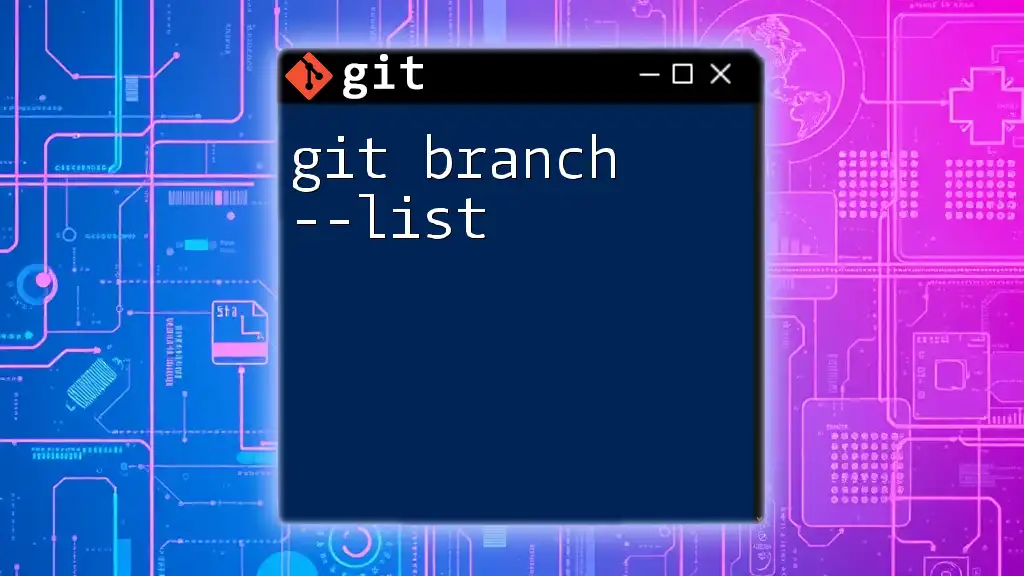
Conclusion
The `git branch -d` command plays a critical role in managing and maintaining a clean repository. Following best practices in branch management will help you and your team work more efficiently. As you practice using the command, consider the ramifications of forcibly deleting branches versus opting for a safer approach, ensuring that your workflow remains smooth and productive.
Additional Resources
For those looking to deepen their understanding of Git commands and branching strategies, consider exploring additional tutorials, Git documentation, and other learning materials. Happy coding!

